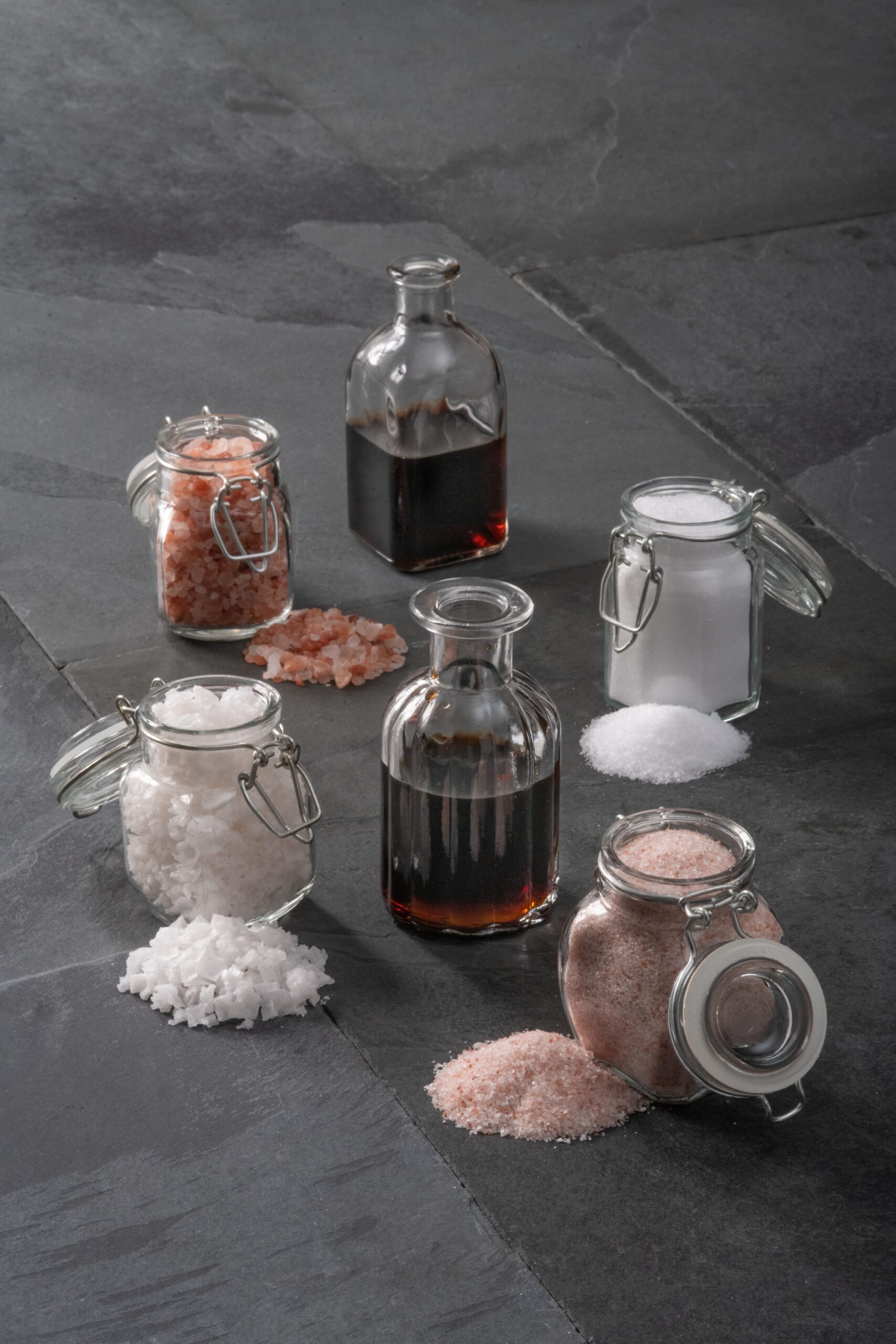Curious about the difference between pickling salt vs table salt? The type of salt you choose can affect flavor, clarity, and results when home canning pickles. Pickling salt is pure, fine-grained, and free from additives, making it the top choice for canning and pickling. Table salt, on the other hand, often contains iodine and anti-caking agents that may cloud brines or slightly alter taste. Understanding how pickling salt and table salt differ will help you choose the right salt for crisp pickles, clear brines, and consistent results in your pickling and fermenting recipes.
(I sometimes use affiliate links in my content. This will not cost you anything but it helps me offset my costs to keep creating new canning recipes. Thank you for your support.)
By Diane Devereaux | The Canning Diva®
Last updated: September 8, 2025
Key Takeaways
- Pickling salt is pure, additive-free salt that dissolves easily in brines.
- Table salt often contains iodine and anti-caking agents, which can cloud liquid and affect flavor.
- Knowing when to use each salt ensures clear brines, crisp pickles, and consistent results in canning.
Pickling Salt vs Table Salt
| Feature | Pickling Salt | Table Salt |
|---|---|---|
| Additives | None | Iodine + anti-caking agents |
| Clarity in Brine | Clear | Cloudy |
| Grain Size | Fine, dissolves easily | Fine/varies |
| Best Use | Canning, pickling, fermenting | Daily cooking, seasoning |
Understanding Pickling Salt
Pickling salt is simply pure granulated salt, free of iodine and anti-caking agents. Its fine grain makes it dissolve quickly in water, creating a smooth brine that doesn’t separate or turn cloudy. This clarity is especially important when canning pickles, as cloudy liquid can look unappealing and sometimes mislead you into thinking your jars have spoiled.
Because it’s pure, pickling salt also has a clean, straightforward flavor that lets the natural taste of vegetables and spices shine through. It’s the gold standard for making crisp pickles and other preserved foods.
How Table Salt Differs
Most table salt on grocery store shelves contains iodine, which was added historically to prevent goiter, and anti-caking agents to keep it from clumping. While these additions are harmless in daily cooking, they can cause problems in canning. The anti-caking agents often leave a cloudy appearance in brines, and iodine may alter the color or taste of your preserved vegetables.
That doesn’t mean table salt is unsafe — it simply isn’t ideal for preserving foods where clarity and consistency matter.
When it is Best to Use Each Salt:
- Pickling Salt: Best choice for canning, fermenting, and making pickling brines where purity and clarity are important.
- Table Salt: Perfectly fine for everyday cooking and when canning meals in a jar recipes, where cloudiness isn’t a concern.
Common Additives in Table Salt That Can Affect Pickling
Often times, the biggest culprit to using table salt is not due to the salt itself, but rather the many additives used in today’s commercial processing. Here is a short list of common additives in table salt which affect our home canned pickling endeavors. When an additive is dissolved in a brine, it can cause cloudiness, residue, or subtle changes in flavor and color. This is why pickling salt, which is pure and additive-free, remains the best salt for canning and preserving crisp, clear pickles.
| Additive | Purpose in Table Salt | Effect in Pickling Brine |
|---|---|---|
| Calcium Silicate | Prevents clumping (anti-caking) | Causes cloudiness in liquid |
| Magnesium Carbonate | Keeps salt flowing freely | Can leave residue or haze |
| Sodium Aluminosilicate | Anti-caking agent | May create a cloudy brine |
| Iodine (Potassium Iodide) | Added to prevent goiter | Can slightly alter color or flavor |
Safe Substitutes for Pickling Salt

If you can’t find pickling salt, there are a few safe alternatives you can use in canning and preserving. Kosher salt is the most common substitute, as long as it’s free of additives like anti-caking agents. Because kosher salt crystals are larger and shaped differently, you’ll want to measure by weight, not volume. For example, one tablespoon of kosher salt may not equal one tablespoon of pickling salt. Sea salt can also be used, but again, check the label to ensure it’s pure and free from additives or minerals that might cloud your brine.
Some specialty salts, like pink Himalayan salt or smoked salts, can technically be used in pickling, but they may change the flavor, color, or clarity of your brine. For example, Himalayan salt contains trace minerals that may darken vegetables, and smoked salts can overpower delicate flavors. Seasoned or blended salts with added herbs, garlic, or spices should be avoided in pickling, since you want full control over the balance of flavors and measurements. For the clearest brines and most consistent results, stick with pure, additive-free salts like pickling or kosher salt.
For an even deeper dive into how different salts affect home canning, be sure to check out my article The Skinny on Salt When Home Canning. In that article, I explore the role salt plays in preservation, flavor, and texture — not just in pickling, but across a wide variety of canning recipes. If you’re looking to understand how salts behave in different preserving methods, it’s a great next read.
People Often Ask
A: You can, but it may leave your brine cloudy and slightly change the flavor. For best results, stick with pickling salt or a pure substitute like kosher salt.
A: Not exactly. Both are pure, but kosher salt has larger, coarser crystals, so measurements may differ. Always measure by weight when substituting.
A: Cloudiness often comes from anti-caking agents in table salt. If you used pickling salt, the cloudiness may be due to natural fermentation or minerals in your water. In lacto-fermented pickles, cloudiness is normal and safe — it’s a natural byproduct of lactic acid bacteria. As long as the pickles smell pleasantly sour and not rotten, and there’s no mold or sliminess, they are safe to eat. However, if the brine smells foul, the vegetables are mushy, or mold develops, the batch should be discarded.
About the Author:
Diane Devereaux, The Canning Diva®, is an internationally recognized food preservation expert, author, and educator with over 30 years of home canning experience. She’s the author of multiple top-selling canning books and teaches workshops across the U.S. Learn more at TheCanningDiva.com.

